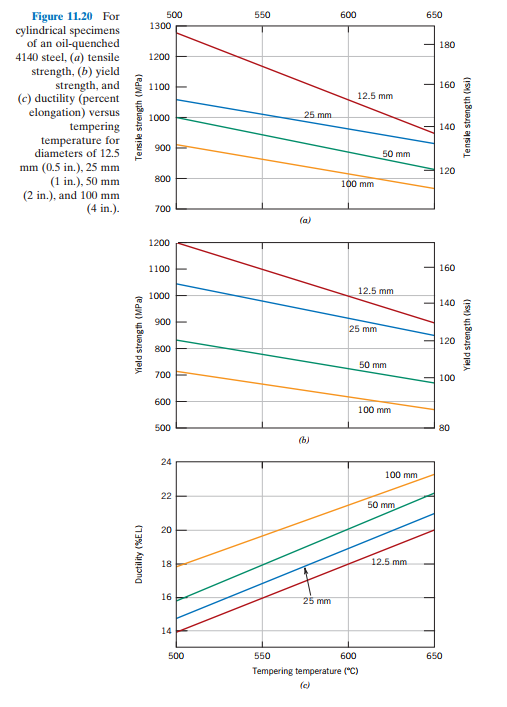Figure 11.20 For cylindrical specimens of an oil-quenched 4140 steel, (a) tensile strength, (b) yield strength, and (c) ductility (percent elongation) versus tempering temperature for diameters of 12.5 mm (0.5 in.), 25 mm (1 in.), 50 mm (2 in.), and 100 mm (4 in.).
Figure 11.20 For cylindrical specimens of an oil-quenched 4140 steel, (a) tensile strength, (b) yield strength, and (c) ductility (percent elongation) versus tempering temperature for diameters of 12.5 mm (0.5 in.), 25 mm (1 in.), 50 mm (2 in.), and 100 mm (4 in.).
Welding: Principles and Applications (MindTap Course List)
8th Edition
ISBN:9781305494695
Author:Larry Jeffus
Publisher:Larry Jeffus
Chapter26: Welding Metallurgy
Section: Chapter Questions
Problem 28R: How do ferrite and cementite work together to form a strong ductile steel?
Related questions
Question
100%
Please explain ths graph from Materials Science and Engineering
An Introduction

Transcribed Image Text:500
550
600
650
Figure 11.20 For
cylindrical specimens
of an oil-quenched
4140 steel, (a) tensile
strength, (b) yield
strength, and
(c) ductility (percent
elongation) versus
tempering
temperature for
diameters of 12.5
mm (0.5 in.), 25 mm
(1 in.), 50 mm
(2 in.), and 100 mm
(4 in.).
1300
180
1200
1100
160
12.5 mm
1000
25 mm
140
900
50 mm
120
800
100 mm
700
(a)
1200
1100
160
12.5 mm
1000
140
900
25 mm
120
800
50 mm
700
100
600
100 mm
500
80
(b)
24
100 mm
22
50 mm
20
18
12.5 mm
16
25 mm
14
500
550
600
650
Tempering temperature ("C)
(c)
Ductility (%EL)
Yield streng th (MPa)
Tensile strength (MPa)
Yield strength (ksi)
Tensile strength (ksi)
Expert Solution
This question has been solved!
Explore an expertly crafted, step-by-step solution for a thorough understanding of key concepts.
This is a popular solution!
Trending now
This is a popular solution!
Step by step
Solved in 2 steps with 1 images

Knowledge Booster
Learn more about
Need a deep-dive on the concept behind this application? Look no further. Learn more about this topic, mechanical-engineering and related others by exploring similar questions and additional content below.Recommended textbooks for you

Welding: Principles and Applications (MindTap Cou…
Mechanical Engineering
ISBN:
9781305494695
Author:
Larry Jeffus
Publisher:
Cengage Learning

Welding: Principles and Applications (MindTap Cou…
Mechanical Engineering
ISBN:
9781305494695
Author:
Larry Jeffus
Publisher:
Cengage Learning